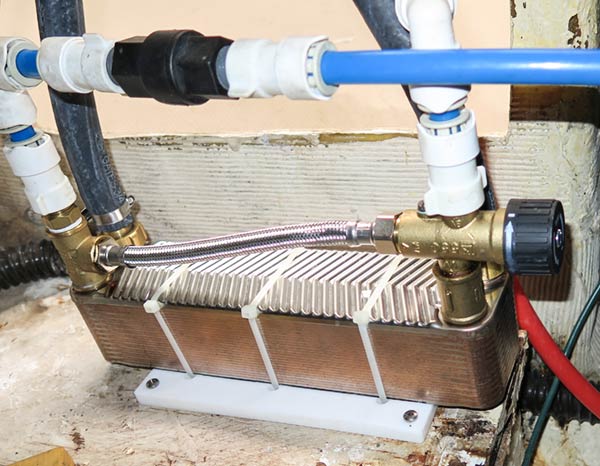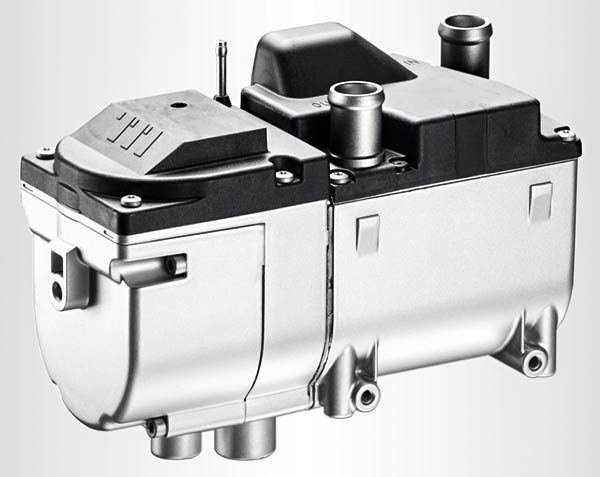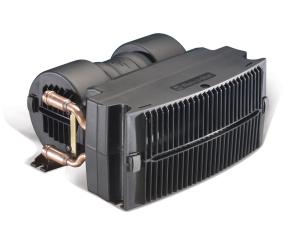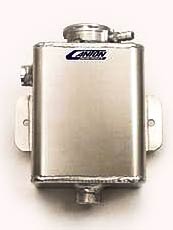January 16, 2016
… a warm, wonderful, luxurious shower!
“So, what’s the big deal?” you ask. (Or maybe, “It’s about time!)
The big deal is this: When we installed our amazing new solar panel and controllers, there was an unintended consequence. We no longer needed the two or three hours every other day of engine running to keep the batteries charged. In fact, we only ran the engine once during the entire cruising season for charging alone. Running the engine made hot water. No engine running – no hot water. That’s not a big deal in the tropics but here in New Zealand, it’s a disaster!
So when our hot water heater tank started leaking, and we found out it would be over $1000 to replace it in New Zealand, we looked for other options. Enter our new Espar (Eberspächer) Hydronic heater.
Just before we left for the tropics in 2012, I installed one of these heaters. (Yea, smart, I know… installing a heater before heading to the tropics, but I knew NZ was in our future – or at least Cyndi knew!) We knew we needed to run this heater once a month or so to keep it working, but we didn’t. Water got in the air intake and it seized up. The replacement parts for repairing it were more than a new heater, so it just sat there, non-functional for a couple of years.
A new one (about the same price as a new traditional boat water heater) seemed like the solution to all our troubles. We could use the new heater to heat the boat on cold NZ mornings when not at a dock, and with the addition of a heat exchanger, we could make hot water (so the theory went). We ordered both from England and now they’re installed and working better than I could have ever imagined.
My imagination was limited by the lack of data available on the heat exchanger. I tried doing the math to see if this combination would give us enough hot water. No data… no math. I found mention of this combination on Cruisers Forum but nothing conclusive as to the results from those who’d tried it. I’d have to go on faith.

It seems like plate-type heat exchangers are pretty common, but not on boats. I’d never seen one before. This one by Webasto was hard to find. I found only one company who sold them and they were also in England. I could have bought a generic plate exchanger, but this one included a mixing valve and I thought that might be useful.
Now it works:
The heater heats antifreeze and pumps it through the system, first to the plate heat exchanger for the hot galley and head water, then through a small radiator with a fan for cabin heat. It stores no hot water, but we still have a limited supply for a short time after the heater is turned off.
The plate heat exchanger is clever. It’s made from about 25 stamped, stainless plates, smashed together and brazed. Fresh water flows through every other plate pair, coolant through the neighboring plates. It’s very compact and very efficient. There is a thermostatically controlled bypass valve that keeps the product water from getting too hot by mixing in some cold water. I think this is a nice, though not completely essential, addition.
The Results:
Wow, wow, wow!!! After running the heater for three minutes, there’s all the hot, hot, hot water you could ever want (limited only to the supply of fresh water on hand). The temperature is not only hot enough (too hot without mixing in some cold water), but incredibly consistent. Our boat shower is now much nicer than many we’ve had in houses and hotels. (Coupled with our sophisticated shower head.)
I don’t understand why every cruising boat doesn’t have this setup!
The Sources:
It was kind of hard finding the parts, and I ate up more than a few GB in the search. Here’s what I went with…
The heater, we bought from Heatso (UK). They were great! Very fast, and very professional. I do not hesitate to recommend them. The heater we bought is the (Eberspächer) Hydronic II D5S along with the installation kit and SmartStart Select controller.
The heat exchanger is a Webasto “motor home plate heat exchanger with mixing valve 4111209A” from Buttler Technik in the UK. There service was great, once I figured out I had to use PayPal as they had problems accepting international credit cards.
By the way, the mixing valve is an LK 550-22.
This is the radiator and three-speed blower we have installed. They’re available as add-on or replacement heaters for cars. We have only one and it’s in the galley. Even on the coldest mornings, the boat is warm about five minutes after turning the heater on.
We have no thermostat for the fan. I thought I’d build one eventually, but now I don’t feel the need.
It might have been better to install a few, smaller radiators around the boat with almost silent computer fans, but this was a simple solution and since I first installed it when we were already late leaving for the tropics, I was in a hurry.
I got the radiator from J. C. Whitney. It’s a Flexalite 640 Heater.
I installed a reservoir tank like the one in this picture. My thoughts were that this would allow for coolant expansion (really not necessary as the rubber hoses do this), make an easy place to fill the system and check the coolant level, and finally, add some coolant volume to the system. I probably should have gone with a slightly larger tank (I’d say mine holds about a liter), but this is working just fine.
I can’t remember where I bought this tank. You might try to search Google images for “aluminum reservoir tank.”
I’ve said nice things about the companies that I purchased the parts from, but I would be remiss without adding a comment about Espar’s TERRIBLE documentation. Hey guys, just because you put it on a CD, doesn’t mean it isn’t CRAP!!! I feel good about the quality of the heater, but it was a difficult install, largely because of the poor documentation and even though I was replacing another, very similar Espar heater. This project is not for the faint of heart.
Please email me if you’d like more details about the installation. -Rich
Update, October 23, 2019
I’d hoped that the flexibility of the hoses would be enough to allow for the expansion of the coolant, but I don’t think it’s so. The heater leaks a little coolant from the coolant tank, enough that I have to top up the fluid every six months or so. I added this simple expansion tank to the reservoir…
I would have just purchased a plastic, after-market tank at an auto parts store but they’re not available here in NZ so a soda bottle and a 3D printed holder did the trick.
Update, February 27, 2016
After using it for a while now, it remains one of the best things we’ve done on our boat. In the interest of fair, balanced reporting, here are the negatives:
- We occasionally smell diesel exhaust from the heater. This only happens as the heater starts up and the wind is in the right direction. It doesn’t last long.
- When we get in from a long motoring run, there’s no hot water. We have to run the heater for a whole three minutes to get our hot water! Three minutes! OK, I guess I can wait that long
- I feel bad about running the heater when we’re tied up at a dock with neighbors (we do it anyway, but I feel bad). I feel bad about both the noise (we didn’t install the muffler that came with the heater and I hear from people that it really helps quiet the system) and the exhaust smell that might blow into their boats. In truth, this really hasn’t been a problem.
Update, March 5 2017
Check out this post: shower-warmerupperer. It saves us quite a bit of water.
I’ve had a couple of questions about the system and one thing I’ve been suggesting is that it might be best to run the coolant to the plate heat exchanger first, before any of the radiators. I think it’s best to get the hottest water possible to the fresh water heat exchanger.
At the Wooden Boat Festival in Tasmania, I found a company that sells many of the components necessary to install a system like ours. Here’s their website: DieselHeat.com.au











